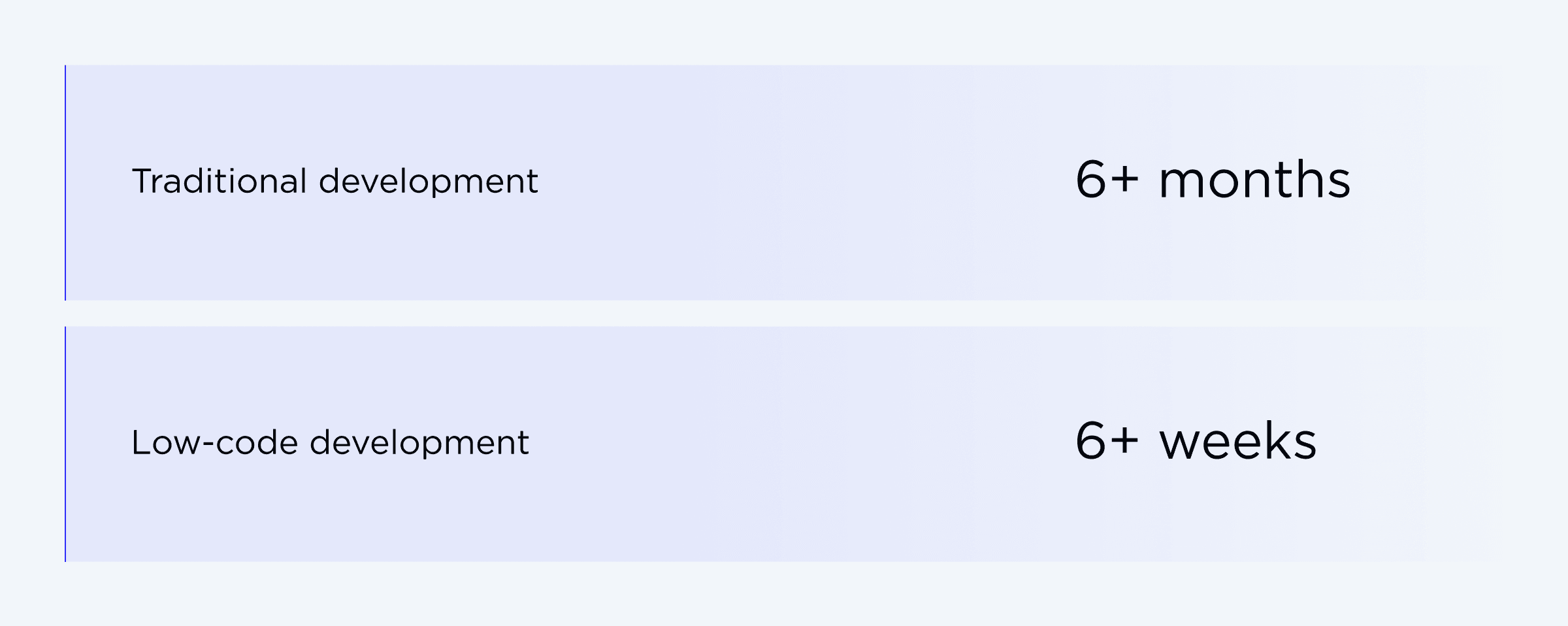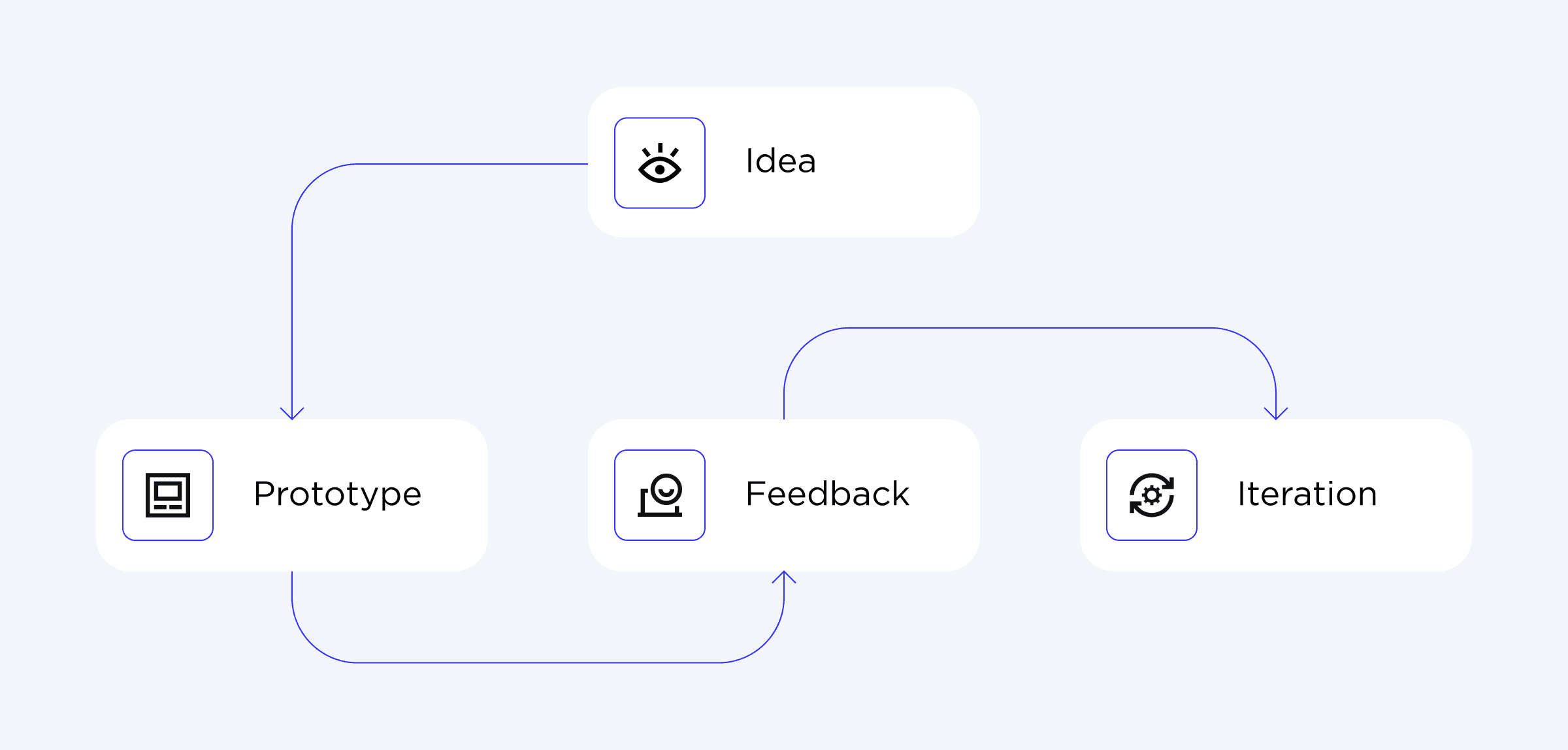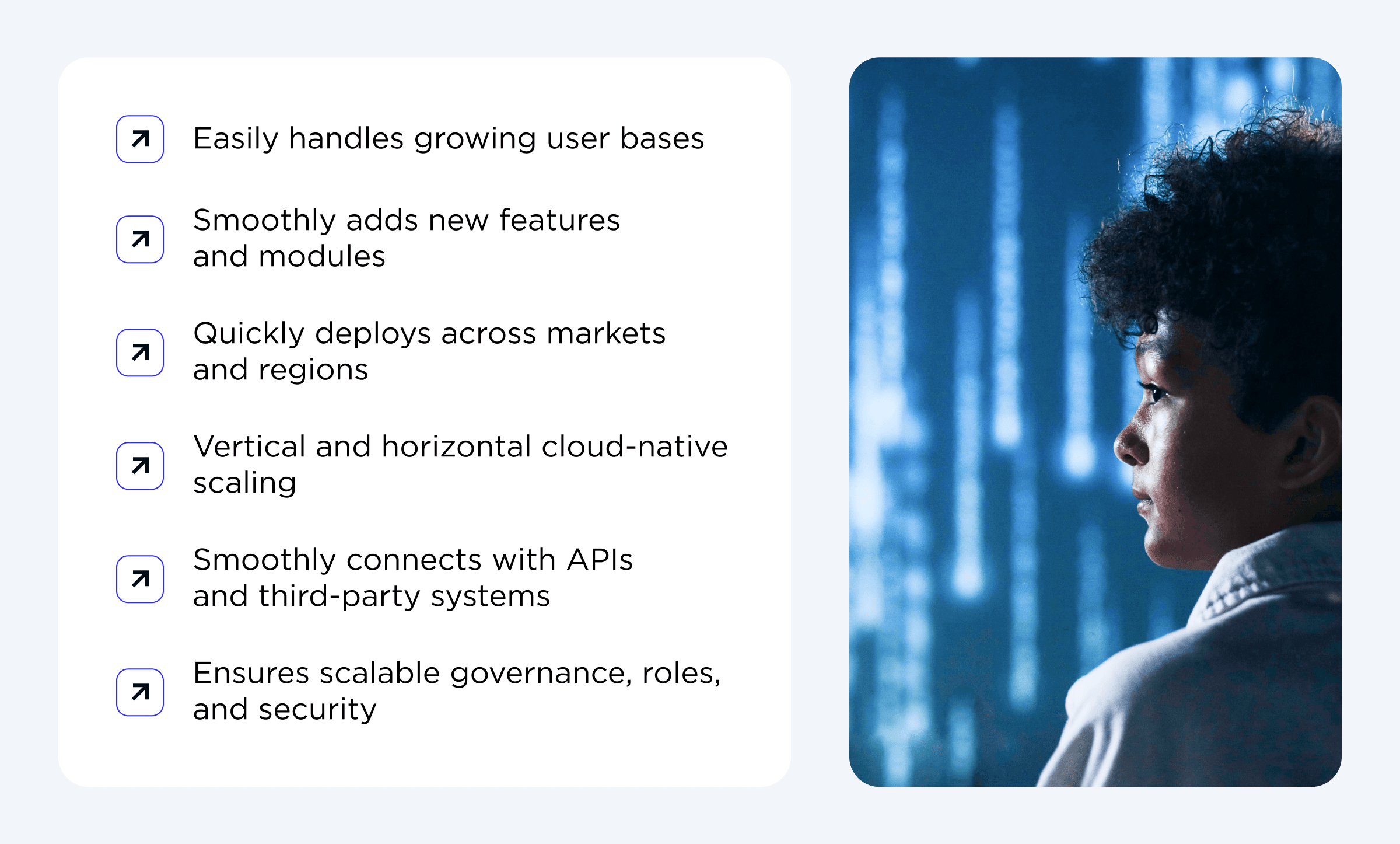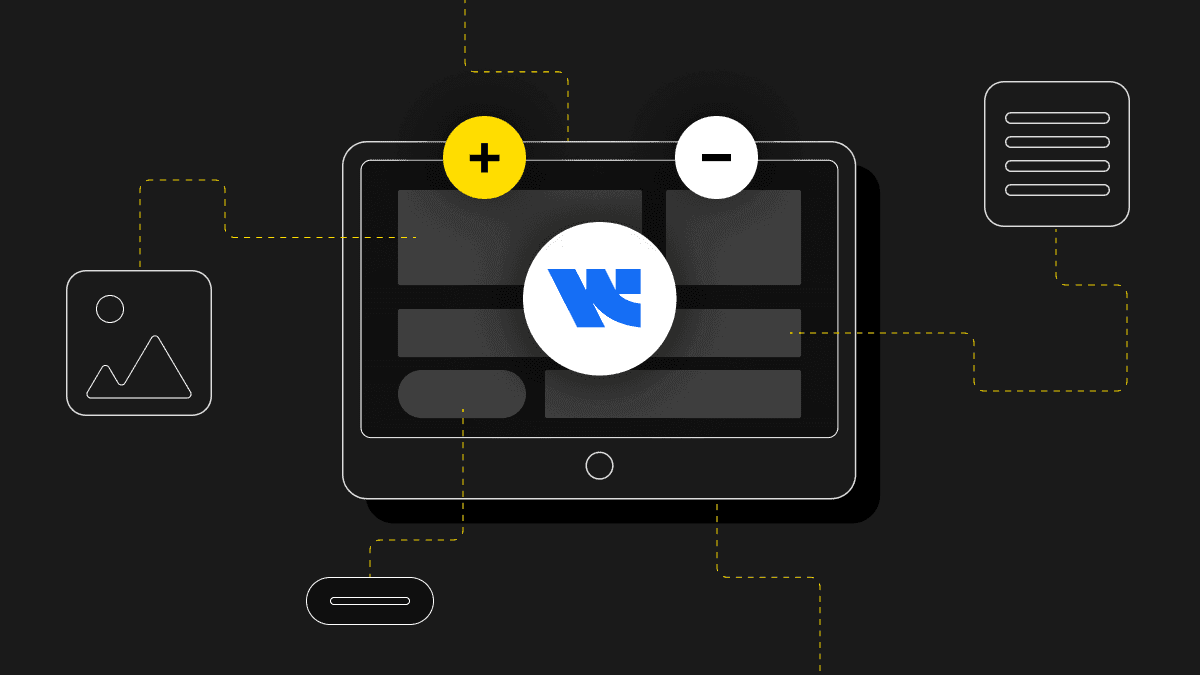Do you know any businesses that delay software transformation due to the fear of the challenges traditional software development might bring? Here’s the kicker - things have significantly changed, and you should share this knowledge (especially with those who are still afraid of implementing digital products).
However, the reasons behind those who linger are mostly because of long coding hours, endless testing, and expensive engineering talent. That’s exactly why low-code development is becoming so popular.
There are many benefits of low-code, and that’s precisely what we’re going to discuss in this article. Before we tackle that, just imagine that ReportLinker predicts that the global low-code development market is expected to reach $36,43 billion by 2027. Surprising, right? What if I tell you that, apart from that, Microsoft expects that among 500 million apps to be developed in the next five years, 450 million will use no-code and low-code platforms. High time to join the hype, don’t you think?
The most frequently mentioned aspect of low-code development is “ease of use,” based on data collected from customer feedback.To put it simply, drag-and-drop interfaces, visual workflows, and pre-built templates and components contribute to the popularity of low-code solutions. It’s not writing everything from scratch anymore, but building it with Lego blocks. But why does it matter so much nowadays? Why use low code? I’ll try to answer these and other questions further in the article when discussing its advantages. Let’s break it down.

1. Faster Time-to-Market
Especially in 2025, speed is everything. It’s not only customers who expect timely updates, but also competitors who aren’t sleeping. One of the most important benefits of a low-code platform is dramatically shrinking development cycles.
And I’m not talking about a few hours or days of reductions. It’s about weeks of coding that can be eliminated thanks to pre-built modules and drag-and-drop tools. No matter what you need, be it payment modules, form builders, or authentication options, it’s highly likely they are already available in a low-code platform.
The companies that have already tried Mendix or OutSystems could reduce the project timelines by almost half. For example, FICO managed to rebuild its Origination Manager app in half the time it had taken before. As a result, it achieved a 75% reduction in development time, halved the development team size, and tripled the speed to market.

2. Cost Efficiency
It is difficult for me to deny that software development can be expensive. Every work should be paid fairly, so developers should receive payment for every hour spent building apps. While it’s fair, some businesses can’t have the luxury of that and need to save by reducing costs without compromising quality and security.
Here’s the thing - that’s what low code gives. You don’t just cut the costs on initial investment, but also on maintenance and updates. Why is it cost-efficient? Because the platform lets you build without hiring in-house teams and updates everything automatically while preserving the high quality of digital projects.
Some companies report saving about 40% on development costs when using low-code for their internal apps. Just imagine what can happen when applying low code across several projects!

Ready to speed up the delivery? Let OTAKOYI guide your low-code journey!
CONTACT US3. Empowering Non-Technical Teams
Moving on with the advantages of low code, we’ve reached the one where low code really shines. Empowering non-tech employees is more than just helping tech teams. It ensures they feel needed and independent.
Just imagine that HR managers or marketing specialists can create their own solutions (onboarding apps or campaign dashboards) without relying on IT teams. Even more than that, they can do that in weeks if not days! No coding knowledge, but they still can get it done.
Ultimately, teams receive more autonomy. But the IT department benefits as well, and they are free of some simple routine tasks. However, when it comes to complex tasks, logic, and integrations, they are required immediately. Yet the entry level is lower.
| Task | Traditional development | Low-code platform |
| Building an onboarding app | Approx. 3 months by the IT team | Approx. 1 week by the HR team |
| Creating a marketing campaign dashboard | Approx. 2 months by developers | A few days by the marketing team |
4. Improved Collaboration
Coming from the previous point, we’ve reached another great benefit. I bet you’ve heard at least once a common complaint from tech or non-tech workers about the problem of “lost in translation”? Sometimes businesses explain what they need, devs interpret it in their own way, and the result doesn’t match. That’s why project managers exist, honestly speaking. However, low-code platforms handle this issue by providing visual and shared interfaces.
Why is it so good that it improves collaboration? Because everyone can see the same screens, workflows, and prototypes. As a result, business leaders can give feedback earlier, and developers can quickly iterate. The best part? It speeds up communication loops, reduces misunderstandings, and products match the initial ideas.

5. Scalability and Flexibility
Moving further with the benefits of low-code, let’s bust the myth that it is good only for small or simple projects. It is a stereotype, as modern platforms can handle even enterprise-level scalability.
No wonder scalability and flexibility are other benefits of low-code development, as it lets apps grow along with businesses. Add users? More features? Other integrations? APIs? Third-party services? You can have everything to go! As a result, you can plug your apps built with low code into CRMs, ERPs, or even custom-built software.
That’s why low code works for both startups wanting to expand and large companies managing thousands of daily users. A scalable and flexible low-code platform can adapt to your needs.

6. Enhanced Innovation
Have you ever dreamed of solutions that would lower (or eliminate) any barriers to experiments? That’s one of the best parts of low code that I’m about to share. Why is it so effortless to try out innovative methods? As you need less time and resources for building apps, you can feel free to test new ideas, right?
For example, you might want to build a new prototype and test it immediately. Or try launching a new customer portal and check whether customers like it. Or you have a new product idea and need to validate it. Now, you can do that without draining development teams (and the financial department as well).
What does it bring? More creativity, less risk, better products, happier employees, and satisfied customers. Businesses feel less afraid of experimenting and failing. Even if they do, they can quickly recover from that, don’t you agree?
7. Better Governance and Security
Some may worry that speed and innovation can bring chaos. Let me assure you that it’s not true. It is rather the opposite, as various low-code platforms bring robust in-built security and governance features.
Of course, you should determine what platform to choose, and in general, when to use low code. I also highly recommend partnering with software developers who can consult you on the way and build everything properly.
With low-code opportunities, they can set role-based access controls and permissions. Why is it important? This way, you protect all the sensitive data and ensure only the right people have access. What is more, all reliable platforms are designed to meet strict compliance standards and regulations like GDPR, HIPAA, and the EU AI Act.
How do providers make sure it stays relevant? That’s the icing on the cake! Providers actually roll out automatic security updates on a regular basis. It’s a win-win case because your IT teams are less overpacked with worrying about and doing that, and yet you still get strong protection for the business as a whole.
| Security feature | Traditional development | Low-code platform |
| Role-based access controls | Manual setup | Built-in |
| Compliance regulations | Needs specialists | Pre-configured |
| Security updates | Manual patches | Automatic |
Final Words
Do you know what the secret of YouTube's success is? Timing! Considering all the advantages of low code, that’s exactly what your business can get. Moreover, you reap other benefits like saving time, empowering your employees, reducing costs, and implementing top-notch technology. Basically, your company can bridge the gap between technology and business, maintaining scalability and security compliance.
It’s your sign to try low code with OTAKOYI if you are tired of IT backlogs, endless testing, slow launches, and high expenses. Build fast and focus on what really matters.






